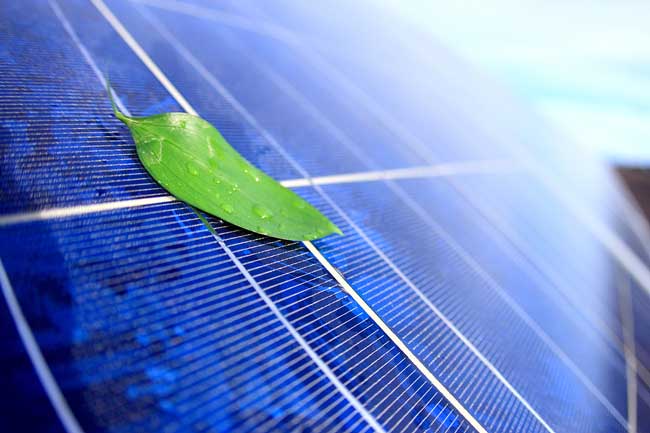
Harvard scientists are mimicking photosynthesis by converting solar electricity directly into a liquid fuel.
Solar power using photosynthesis is the most ancient — and successful — form of energy production. Plants have used this method for over a billion years, harvesting sunlight, combining it with water and turning this abundant solar energy into food. Now researchers at Harvard University are looking to use the process in a really novel way.
Scientists have for many years tried to mimic the photosynthesis process to store solar energy. However without a great deal of success. Though able to create conditions where electricity from solar cells is “photosynthesised” into hydrogen that may used for fuel, the problem was the practicality of using hydrogen in a world hard-wired to using liquid fuels.
Here’s where a team of researchers at Harvard University got creative: by developing an artificial leaf to produce a more preferred liquid energy. This new approach to artificial photosynthesis uses the leaf as a catalyst to make sunlight split water into hydrogen and oxygen, with a bacterium introduced into the catalyst to convert carbon dioxide plus hydrogen into the liquid fuel isopropanol.
“…this system converts sunlight shining on a solar panel to electricity,” said Brendan Cruz Colón in a fascinating 13 February article written for The Conversation. A Ph.D candidate at Harvard and a co-author of the research paper, he describes the process in detail and introduces us to the bacterium Ralstonia, an essential component of the artificial photosynthesis process.
“Electricity travels to a glass vial containing liquid where both Ralstonia and the water-splitting catalyst are immersed. The electricity drives the catalyst to generate O2 and H2, which Ralstonia consumes along with bubbled carbon dioxide to grow. In the lab, we piped in carbon dioxide from a tank; in a commercial situation, we could use carbon dioxide emissions from a polluter, such as a power plant,” he says.
“There have been 2.6 billion years of evolution, and Pam [the Harvard Medical School’s Pam Silver] and I working together a year and a half have already achieved the efficiency of photosynthesis,” said Daniel Nocera, the Patterson Rockwood Professor of Energy at Harvard University and one of the lead researchers on the team.
The team took a new look at photosynthesis when they came up with the electronic leaf. While challenges remain before the method can become viable, the team remain confident that the potential of the bionic leaf is almost limitless. Along with a range of other uses, a key component of their research is using the artificial leaf as a mobile energy producing source in areas that lack a large liquid fuel infrastructure.
Perhaps the secret behind the bionic leaf — and solar power using photosynthesis in general — is the simplicity of the idea and ease of use. It may be these two qualities that make the bionic leaf an important part of our renewable energy future. Photosynthesis in the mix for future energy needs? Maybe we can learn from the plants.

 RSS - Posts
RSS - Posts



Rich,
I wrote to you some time ago about using excess of solar produced electricity from our roof panels to power the splitting of oxygen and hydrogenat separate anode and electrode whilst they are immersed in “distilled water”.
The hydrogen is tanked to later powers a hydrogen generator and the oxygen is vented to atmosphere. Tell me I am wrong and that Chinese developers are not 3 years of such hydogen/solar hybrid generating systems.
The subject of your post seem to be one step added. It mentions CO2 which is of course the bad guy